Withings Pulse O2 Review - Performance, Battery Life and Verdict Review
Performance, Battery Life and Verdict
Withings moves tracking to the wrist but issues still persist
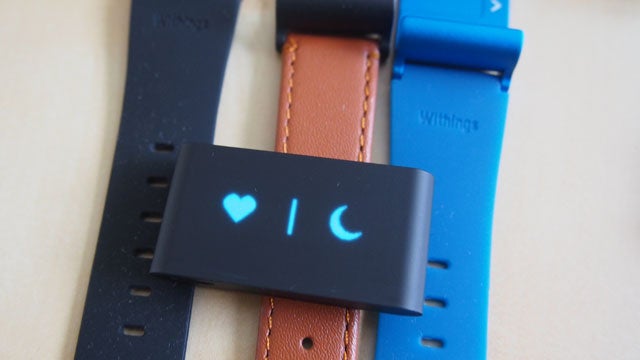
Sections
- Page 1 Withings Pulse O2 Review
- Page 2 Performance, Battery Life and Verdict Review
Withings Pulse O2: Withings Health Mate App
The first thing to appreciate is the Bluetooth 4.0 support, which means there’s support for real-time syncing. There’s a desktop application but the free Android and iOS app is where you are going to spend the most time. It requires the usual type of information to get things set up like weight and height data. If your smartphone doesn’t have the latest Bluetooth it will sync data every six hours instead.
Withings still uses the same butterfly icon to offer a visual representation of your Wellness level. Here you’ll find data recorded for weight, activity, sleep and heart rate. Those areas neglected will be empty and those where you are more successful will give you a percentage of your goal. Clicking the section on the butterfly also displays third party app support so for the activity section the Withings app works with RunKeeper and BodyMedia.
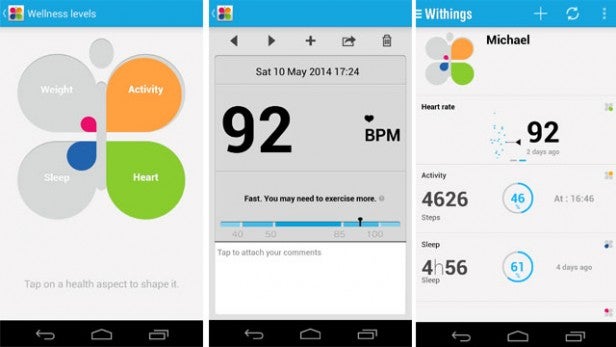
In the main display, you can quickly view data for heart rate, activity and sleep, which can be all re-ordered depending on your preference. Over on the left is the drop-down menu where you can view leaderboard, profile, my devices, sharing information, a help centre, access to the Withings store and settings.
It’s a very simple app to use and both sleep and activity tracking data is easy to read and digest. The heart rate information is slightly trickier as it’s displayed in small dots on a graph and when selected will give you the BPM reading and a comment like, ‘Fast. You may need to exercise more’. The blood oxygen levels, however, are nowhere to be seen and considering this is a new feature it’s strange not to see it included.
Withings Pulse O2: Performance and Battery Life
Putting the Pulse O2 to the pedometer test against the Jawbone UP24 and Garmin Vivofit, the data shows it was very consistent with the Jawbone UP24 and Garmin Vivofit particularly with step count, distance covered and calories burnt. One of the nicest aspects of the data is being able to pick out when we went out for a run thanks to the run detection, so there’s no need to manually log runs. Comparing it to the GPS-enabled TomTom Runner, the Pulse O2 is generally consistent with distance, time and calorie count but the average pace per kilometre is off by two minutes.
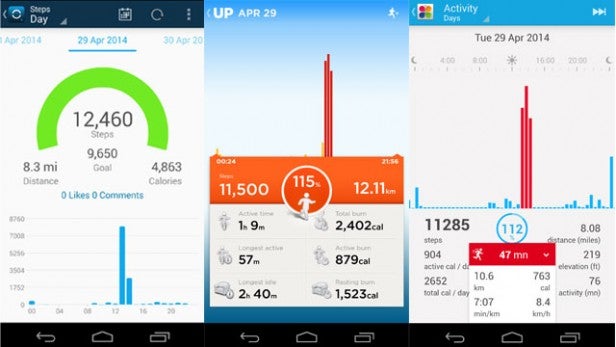
Step tracking compared: Garmin Vivofit vs Jawbone UP24 vs Withings Pulse O2
It’s a similar story with the sleep tracking data for sound (or heavy) sleep and light sleep is consistent with the Jawbone UP24. The data is actually really insightful compared to most other sleep trackers breaking down sleep in a more digestable way. Making sense of this data, however, is something that the Jawbone ecosystem handles much better and Withings could benefit from helping users understand what the different sleep tracking information means and how you can improve getting more bed time.
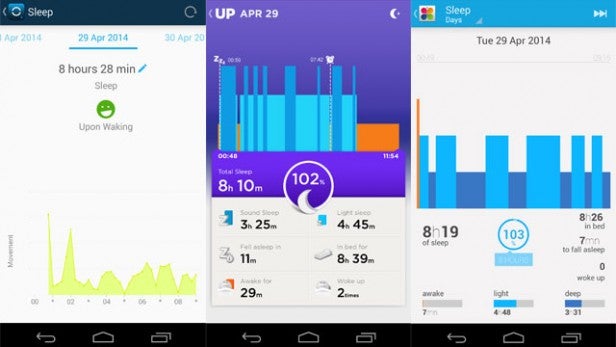
Sleep tracking compared: Garmin Vivofit vs Jawbone UP24 vs Withings Pulse O2
We also tested its heart rate performance against a chest worn Bluetooth Smart heart rate monitor with the TomTom Runner and it’s clear the Pulse O2 is more suited to delivering resting heart rate information as opposed to during a workout: first, because you have to take it out of the strap to take the reading; secondly, because it did at times struggle to deliver a reading or posted heart rate readings 20 beats per minute higher than the chest strap.
The same can be similarly said of the blood oxygen levels. It doesn’t really work when you are out running, but it is fine when stationary. During our time using it registered a 98-99% score, which according to Withings is a good area to be in. We were unable to check this against the actual kind of blood oxygen test you’d have at your doctor, so it’s difficult to know how accurate and insightful this data actually is.
One of the best features of the original Pulse was the battery life. While other trackers struggle to make it through a week without needing a recharge, the Pulse has a two-week battery life helped a little by the fact that it’s not an always-on display. It still manages to deliver close to that two-week battery life and supports a standard microUSB to USB cable to power it back up. The power saving mode gives you an extra 24 hours to find the charging cable and can still upload data but you will not be able to view it on the tracker itself.
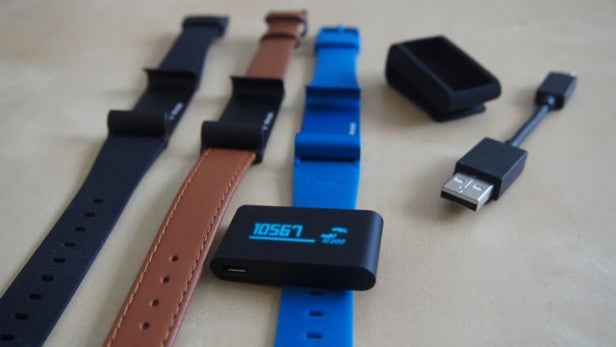
Should I buy the Withings Pulse O2?
The Withings Pulse O2 is still one of the best value fitness trackers available. The data is comprehensive and largely consistent for the step and sleep tracking. The app is one of the easiest to use, we really like the run detection feature and it still delivers great battery life if you don’t compare it to the Garmin Vivofit‘s year-long battery life that is.
While it’s great to see Withings address the wristband issue for those who didn’t want to clip it on the trousers, it’s disappointing that it’s not the sleek and attractive design we had hoped for. There’s definitely some discrepancies in some of the readings and data particularly for the heart rate readings during a workout and some of the run detection sessions. What’s more concerning is that the screen issues still persist and the touch panel does appear to be more temperamental in terms of responsiveness.
For £99, you are looking at the Fibit Flex and the Garmin Vivofit as the nearest competitors to the Pulse O2. The water-resistant Vivofit has the always-on display, a year-long battery life and some interesting motivational features, but lacks the more intuitive app. The Flex has a more minimal display and a week-long battery life, but the Fitbit ecosystem is one of the best out there alongside Jawbone to make most sense of the data.
As a comprehensive fitness tracker, the Pulse 02 is good value for money and you have to applaud Withings for trying to pack even more innovative features into such a small body. We just hope that the third generation will come up with a much nicer-looking smartband solution to have around the wrist.
Verdict
The Withings Pulse O2 is a feature-packed and largely effective tracker, but we’d like to see Withings address some of the small niggles and awkward wrist strap design.


